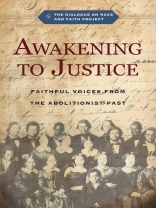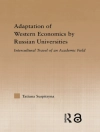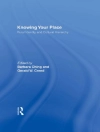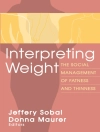‘O where are the sympathies of Christians for the slave and where are their exertions for their liberation? . . . It seems as if the church were asleep.’
David Ingraham, 1839
In 2015, the historian Chris Momany helped discover a manuscript that had been forgotten in a storage closet at Adrian College in Michigan. He identified it as the journal of a nineteenth-century Christian abolitionist and missionary, David Ingraham. As Momany and a fellow historian Doug Strong pored over the diary, they realized that studying this document could open new conversations for twenty-first-century Christians to address the reality of racism today. They invited a multiracial team of fourteen scholars to join in, thus launching the Dialogue on Race and Faith Project.
Awakening to Justice presents the groundbreaking work of these scholars. In addition to reflecting on Ingraham’s journal, chapters also explore the life and writings of two of Ingraham’s Black colleagues, James Bradley and Nancy Prince. Appendixes feature writings by all three abolitionists so readers can engage the primary sources directly.
Through considering connections between the revivalist, holiness, and abolitionist movements; the experiences of enslaved and freed people; abolitionists’ spiritual practices; various tactics used by abolitionists; and other themes, the authors offer insight and hope for Christians concerned about racial justice. They highlight how Christians associated with Charles Finney’s style of revivalism formed intentional, countercultural communities such as Oberlin College to be exemplars of interracial cooperation and equality.
Christians have all too often compromised with racism throughout history, but that’s not the whole story. Hearing the prophetic witness of revivalist social justice efforts in the nineteenth century can provide a fresh approach to today’s conversations about race and faith in the church.
Содержание
Acknowledgments
Prologue—Jemar Tisby
Introduction: Waking a Sleeping Church
1. ‘How Long, O Lord?’ A Narrative of Three Christian Abolitionists—Christopher P. Momany
2. ‘Soul-Destroyers Tore Me from My Mother’s Arms’: West African Resistance to the Slave Trade—Sègbégnon Mathieu Gnonhossou
3. ‘Liberty, Liberty!’: Witnesses to a More Racially Equitable Future—David D. Daniels III
4. ‘Reviving Our Spiritual Strength’: Worship, Justice, and Salvation—R. Matthew Sigler
5. ‘This Holy Cause’: Revivalist Theology and Justice Advocacy—Douglas M. Strong
6. ‘Purified Through Fire’: The Piety and Power of Female Affliction—Diane Leclerc
7. ‘Organized Efforts to Educate and Elevate’: Charitable Aid among Christian Abolitionists—Esther Chung-Kim
8. ‘Made Welcome as Equals’: The Oberlin Experiment in Interracial Christian Community—Albert G. Miller
Conclusion: A Prophetic Past—Estrelda Y. Alexander
Appendix A: Timeline of Significant Dates in this Historical Narrative
Appendix B: James Bradley, ‘Brief Account of an Emancipated Slave Written by Himself, at the Request of the Editor, ‘ 1834
Appendix C: Excerpts from the Journal of David S. Ingraham, 1839-1841
Appendix D: David Ingraham, ‘Capture of the Ulysses—Sufferings of the Slaves, ‘ 1840
Appendix E: Excerpts from The Narrative of Nancy Prince, 1853
List of Authors
Image Credits
Index
Об авторе
Estrelda Y. Alexander (Ph.D., The Catholic University of America) is a visiting professor of theology in the School of Divinity at Regent University in Virginia Beach, Virginia, and executive director of the William Seymour Educational Foundation.












